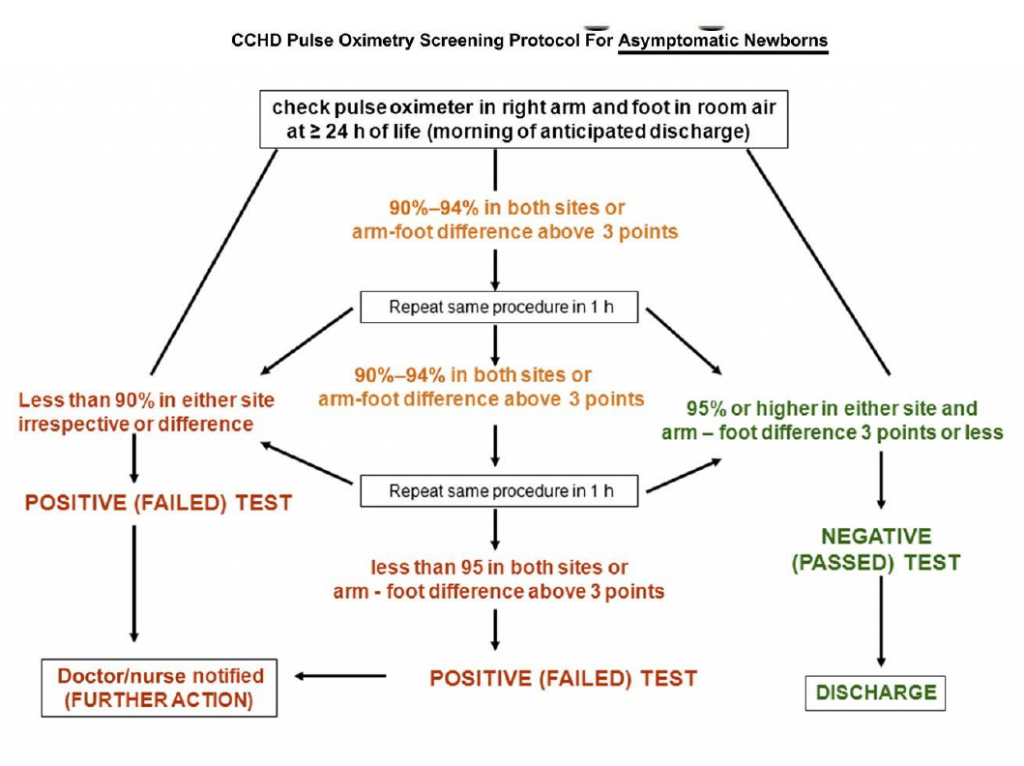
In India, Each year more than 3,00,000 babies are born with congenital heart diseases.
Critical congenital heart disease
- 75,000 of them are critical.
- They are very vulnerable and can perish for lack of immediate attention and medical help.

Which are critical congenital heart defects?
1. Duct-dependent systemic circulation
- Interrupted aortic arch
- Complex/critical coarctation of the aorta
- Hypoplastic left heart syndrome (HLHS)
- Critical aortic valve stenosis
2. Duct-dependent pulmonary circulation
- Pulmonary atresia—various forms
- Variants of congenital heart disease with severe pulmonary stenosis/atresia ( Tetrology of Fallot (TOF) , Double outlet right ventricle ( DORV), congenitally corrected trans position of great arteries (CCTGA) etc )
- Critical pulmonary valve stenosis
3. Total anomalous pulmonary venous drainage
(TAPVC)
4. Transposition of the great arteries (TGA)
5. Complex cyanotic congenital heart disease
- Transposition of the great arteries—ventricular septal defect, Tetralogy of Fallot, Double outlet left ventricle,
- Functional univentricular heart—various forms. (
- Tricuspid atresia(TA), double inlet ventricle etc)
For healthy babies in nursey
A simple test at 24 hours of life : pulse oximetry to detect saturation
American Academy of Paediatric AAP American Heart Association AHA recommendation 2011
How to do pulse oximetry?
Check saturation in right hand and one lower limb 24 hours after birth.

PASS
- Saturation in hand and leg is more than 95% with difference less than 3%: Pass
- No further action required

FAIL
If any of saturation in LESS THAN 90%: Test Fails

- Saturation between 90 to 94 or difference
- more than 3%:
- Repeat 2 more times at 1 hour interval

- If saturation remains less than 95% or difference more than 3% on 2 more occasions : FAIL
- If saturation is more than 95% then PASS

For premature babies in NICU
2 stages screening
Stage 1:
– At 24-48 hours after birth
– If saturation difference between upper limb and lower limb > 4% for 3 times at 1 hour interval : Fail
– Sat< 95%, upper and lower limb difference < 3% with consistent clinical setting: Conditional Pass
– Sat< 95%, upper and lower limb difference < 3% withoput consistent clinical setting: Fail
Stage 2
After 24 to 48 hours of weaning from oxygen
– Same as AAP protocol
Few additional points for failure
– Inability to wean oxygen at discharge
– Inability to maintain oxygen saturation above 90% on room air
If test FAILS
1.If test FAILS Thorough physical examination for other causes of desaturation.
2.Immediate referral for paediatric cardiologist opinion and detail 2 D echocardiography.
- It is sensitive and specific test.
- Just 5 minutes of pulse oximetry at bedside can make a lot of difference and save many neonates.

REPLY COMMENT